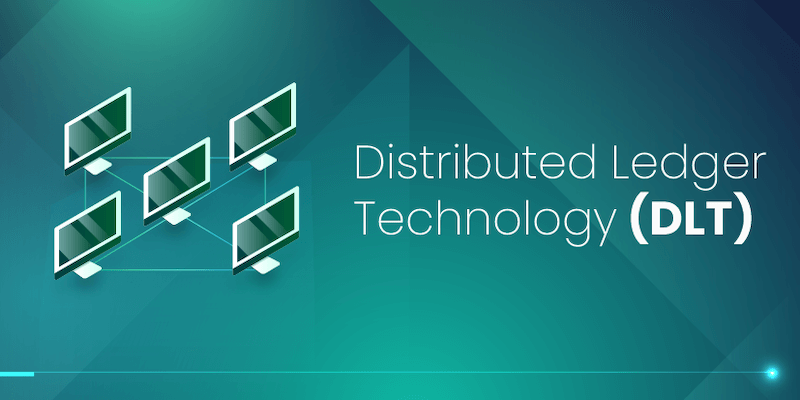What is distributed ledger technology in blockchain? You’ve probably heard of blockchain, the brain powering Bitcoin. But at its heart lies a concept both simple and revolutionary – a shared ledger sprawling across a network, called distributed ledger technology (DLT). No single person controls it, and everyone can use it to safely store records. Let’s peel back the tech lingo and dive into how DLT is changing the game in finance and beyond.
Understanding Distributed Ledger Technology: The Backbone of Blockchain
Exploring the Fundamentals of Distributed Ledger Explanation
Imagine a book where everyone writes down who paid whom. Now picture not one, but many copies of this book across the globe. They all update at the same time. That is a simple way to think about distributed ledger technology (DLT) in blockchain. It is a digital system for recording details of transactions. Here, transactions occur in multiple places at once. Unlike traditional ledgers kept by one party, like a bank or government, a DLT has copies across many computers.
The Architecture of Decentralized Systems in Finance
In finance, decentralized systems cut out the middlemen. That means no banks control the ledger. It is just you and the other person in a deal, directly. That makes things fast and direct. This setup relies on DLT to keep an honest record. Each deal gets locked in place once all parties agree. This way, no one can say the deal didn’t happen.
How Does DLT Work in Peer-to-Peer Networks?
DLT shines in peer-to-peer networks. Here, anyone can join and share in maintaining the ledger. Much like a group project, each computer (or node) has a task. They check and record transactions. They use rules to agree on what is true. This is called a consensus mechanism. It keeps tмхе ledger trustworthy and accurate. Everyone sees the same ledger version. This builds trust without needing a central organizer.
In summary, DLT is like a modern take on a community bulletin board. It gives power to everyone in the network. They drive the system and keep an eye on each other. For us tech architects, that means we focus on how to make this digital system robust. We watch out for issues like how to handle a lot more users or data. We also ensure transactions are secure. We use math (cryptography) to keep things safe. We design the system so that it can adapt to changes while keeping records unchangeable. All this tech talk comes down to what DLT helps us with every day: building trust, streamlining deals, and making sure of the truth in the digital world.
The Mechanics Behind DLT: Ensuring Security and Transparency
The Role of Consensus Mechanisms in Maintaining Ledger Immutability
Consensus mechanisms are vital in distributed ledger technology (DLT). They ensure all copies of the ledger match. Think of it like a group vote. Every participant must agree on new entries, making fraud tough. This shields the ledger from change or harm.
Cryptography in DLT – Securing Transactions on the Blockchain
Secure transactions are a must. This is where cryptography comes in. It scrambles transaction data, making it unreadable to unwanted eyes. Each transaction is safe, like sending a secret message that only the receiver can decode.
Transparency vs. Privacy: Public vs. Private Blockchains
DLT offers different ledgers for transparency and privacy. Public blockchains let anyone see the ledger, aiming for openness. Private blockchains restrict who can view and use the ledger. Both types serve diverse needs but keep a secure, truthful record of transactions.
Now, let’s dive deeper.
Consensus mechanisms offer a way for all nodes in a blockchain to agree. This happens before new data becomes part of the ledger. It stops a user from spending the same money twice, a key concern in the digital finance world.
Several consensus methods exist. Proof of Work (PoW) makes nodes solve hard puzzles. Proof of Stake (PoS) chooses participants to validate new data, basing choices on the participant’s coin stash. Both aim to secure and maintain DLT’s credibility. They also prevent the dreaded blockchain forks from split opinions on a ledger’s state.
Crypto does more than encrypt transactions. It also secures identities and connects blocks in the chain with hash functions. These are like digital fingerprints, unique to each block. If one block changes, its hash changes, warning the network of potential tampering.
Public and private blockchains serve DLT’s dual need for openness and privacy. Public chains, like Bitcoin’s, let anyone join and maintain the ledger. Private ones, often used by businesses, limit access to an invited group. Both forms keep accurate, unalterable records which are crucial for trust in distributed networks.
So, why choose DLT over old databases? DLT is like a shared diary that everyone writes in and checks. Traditional databases are like a single diary that one person keeps and shows to others when asked. DLT’s shared use builds trust and cuts out the middleman, making each transaction fluid and transparent.
This tech is spreading well beyond cash. It’s reshaping supply chains, securing health records, and even linking up gadgets on the internet of things. Its mix of truth and trust is a game-changer. DLT is not just tech talk. It’s a door to a future where secure, shared records are the norm, making our digital and everyday lives better.
The Advantages of DLT Over Traditional Systems
DLT vs Traditional Databases – A Comparative Study
Have you ever wondered how DLT stands out from old school databases? DLT or distributed ledger technology is a game-changer. Traditional databases have one spot where all the info lives. DLT spreads the info across a whole network. This means no single point can fail and mess everything up.
In DLT, every user has a copy of the database. When someone adds new info, everyone checks it. They only add it if everything matches up. This check is called consensus. It’s like everyone in a group agreeing before making a decision. This makes DLT super safe and hard to mess with.
In finance, DLT helps keep money safe from fraud. Banks can use it to track every dollar without errors. Using DLT means everyone can trust what they see without doubting. That’s a big win in the world of money!
Scalability of Distributed Ledgers – Addressing the Challenges
Some folks say DLT can’t handle a lot of action, but that’s not quite right. Sure, it’s a challenge when tons of people use it all at once. But smart people are working on this problem every day. They’re finding new ways to make DLT faster and able to handle more users.
One way they do this is called sharding. It’s like breaking up the data into smaller pieces that can move faster. This helps the network grow without slowing down. It’s like having more lanes on a highway to handle more cars.
The Efficiency and Real-world Applications of DLT
Now, let’s chat about how DLT makes things run smooth and fast. Like I said, with DLT, there’s no waiting for one central spot to say OK. Instead, the users check new info in real time. This cuts out delays and makes things zip along.
Plus, DLT’s not just for finance. Take supply chains, for example. Companies use DLT to track stuff from start to finish. They can see everything that happens to a product on the way to stores.
And in healthcare, it keeps patient records safe and easy to share with doctors. No more lost files or mix-ups. This could really change how we look after our health.
DLT is like a neat set of Legos. Each block is clear and fits with the next to build something strong. What’s built works smooth and everyone can see how it’s done. That’s how DLT is making the world more honest and efficient, one block at a time.
Future-Proofing Industries with Distributed Ledger Tech
Smart Contracts on DLT – Revolutionizing Agreement Execution
Smart contracts are self-running deals with rules written in code. They live on distributed ledgers like blockchain. When set conditions meet, these contracts activate. No need for middlemen. This change is huge. Deals seal faster and with less risk of error or fraud.
This ease comes from blockchain tech. Smart contracts on DLT make trades seal themselves. All see the rules and results. This trust is key.
Many think DLT is just for money trades. Not true. It’s changing other fields too.
Beyond Finance: DLT in Supply Chain, Healthcare, and the Internet of Things
DLT does wonders in tracking goods. From factory to shelf, each step records on the ledger. It’s fast and can’t be changed. This means you can trust it. Getting products we can rely on gets easier.
Health care gains too. With DLT, medical records are safe and easy to share. Doctors anywhere can see your history and give better care.
Devices talking to each other, like in smart homes, also gain from DLT. This tech helps devices make secure and smart choices without a person’s help.
Overcoming Adoption Challenges and Interledger Protocols Exploration
But DLT isn’t everywhere yet. Getting new systems to replace old ones is hard. People must understand and trust the new way. This can take time.
The tech must talk to other systems too. That’s where interledger protocols come in. They let different DLTs work together. This makes using DLT easier and more useful for everyone. It helps bring the future of secure and smart systems into today.
We’ve covered a lot of ground on Distributed Ledger Technology (DLT), diving into its core structure and how it shapes the world of finance. We explored how DLT works in peer-to-peer networks and the security that comes with decentralized systems. Remember the role of consensus mechanisms and cryptography? They keep our transactions safe and ensure every piece of data is set in stone. Plus, we looked at how different blockchains measure up when it comes to keeping things transparent but also private.
When compared to old-school databases, DLT stands tall. It grows without a hitch and brings speed and new uses to the table, moving way beyond just money matters. We’ve seen its power in healthcare, trade, and even everyday gadgets. Sure, bringing everyone on board with DLT comes with hurdles, but looking at smart contracts and protocols linking different ledgers, we’re crafting a clever, connected future.
In short, DLT isn’t just another tech buzzword; it’s a game-changer. Trust in its ability to revolutionize industries is well-placed. I’m betting on DLT to keep proving its worth, making systems we rely on stronger and smarter. Here’s to the DLT journey—upward and onward!
Q&A :
What is Distributed Ledger Technology in Blockchain?
Distributed Ledger Technology (DLT) refers to a digital system for recording transactions of assets where the transactions and their details are recorded in multiple places at the same time. Unlike traditional databases, DLTs like blockchain do not have a central data store or administrative functionality. In a blockchain context, the DLT ensures that each participant on the network has access to a shared ledger, which is updated through a consensus among participants.
How Does Distributed Ledger Technology Work in Blockchain?
In blockchain, Distributed Ledger Technology works by allowing each participant (or node) in the network to have an identical copy of the ledger. Transactions are grouped together in blocks and added to the chain of previous transactions, hence the term “blockchain.” With the use of cryptographic signatures and consensus mechanisms such as proof of work or proof of stake, the integrity and chronological order of transactions are maintained and agreed upon across the network.
What are the Advantages of Distributed Ledger Technology?
The advantages of Distributed Ledger Technology include enhanced transparency, since all network participants share the same documentation as opposed to individual copies. It also offers reduced errors through consensus-driven updates and increased security due to the distributed nature of transaction recording, which makes it harder to tamper with the records. Additionally, DLT can streamline processes and reduce costs by eliminating the need for intermediaries.
Is Distributed Ledger Technology the Same as Blockchain?
While blockchain is the most recognized form of Distributed Ledger Technology, they are not strictly the same. Blockchain is a type of DLT, where data is organized into blocks and chained together. However, DLT can also exist in forms that do not employ blocks but instead use other structures for storing data across the network.
Can Distributed Ledger Technology be Used Outside of Cryptocurrencies?
Yes, Distributed Ledger Technology has potential applications that extend far beyond the scope of cryptocurrencies. These include supply chain management, identity verification, voting systems, healthcare record management, and more. The transparency, security, and efficiency of DLT make it appealing for any transaction or record-keeping process that can benefit from a decentralized and immutable ledger.


